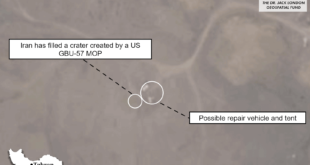The EU’s latest migration deals with Egypt and Tunisia offshore border control without meaningful commitments to address root causes of migration or safeguard human rights.
The European Union is going all-in on border externalization. In March, European Commission President Ursula von der Leyen, Italian Prime Minister Georgi Meloni, and four other European leaders traveled to Cairo to advance a €7.4 billion cash-for-migration-curb deal. This followed a similar EU deal with Mauritania earlier in the month, and there are reports of another impending agreement with Morocco.
All of these arrangements are modeled on the EU-Tunisia migration deal in July 2023, whose turbulent implementation reveals the pitfalls of the EU’s migration strategy. In July 2023, a “Team Europe” delegation led by Meloni, Von Der Leyen, and erstwhile Dutch prime minister Mark Rutte launched a “strategic and global partnership” with Tunisian President Kais Saied. At the time, Tunisia was on the verge of bankruptcy, in part because Saied lacked the political capital to undertake difficult spending reforms. The EU framework dangled potentially €1 billion in aid (conditional on Tunisia’s ratification of an IMF deal) among other promises of bilateral cooperation. The crux of the framework was €105 million in funding for border management and Tunisia’s commitment to prevent migrants from reaching European waters.
The EU-Tunisia deal came soon after Tunisia overtook Libya as the most active departure point for migrants crossing the central Mediterranean. Tunisia has become a transit hub for Sub-Saharan migrants after Libya’s militias effectively but atrociously cracked down on smugglers and migrants. Libya was aided in this effort by Italy, whose government agreed in 2017 to train and equip various armed groups, forming what is now nominally a Libyan coast guard and functionally an EU proxy force. Despite documented evidence of horrific migrant abuse, this Italy-Libya arrangement was renewed in February 2023—and migrants turned to alternative routes.
The Team Europe delegation hailed the July EU-Tunisia framework as a blueprint for migration management—an increasingly salient issue in European politics. But the deal got off to a rocky start: EU lawmakers challenged its legality, the lack of human rights language in the face of state violence against migrants, and what they saw as the bankrolling of an emerging autocrat. In response, Tunisia denied entry to a delegation from the European Parliament’s foreign affairs committee, and then Saied publicly rejected a separate €60 million financial support package. Saied, loath to appear as Europe’s vassal, accused the EU of breaching the cooperative spirit of the July agreement by offering a disrespectful handout. While the EU and Tunisia resolved this spat by December, the wider cash-for-migration-curb framework came under scrutiny again in March 2024, when some European parliamentarians claimed the EU transferred funds directly to the Tunisian president, instead of into an EU-agreed project.
Meanwhile, Tunisia has increased interceptions of migrants at sea, and since last August, has automatically expelled sub-Saharan migrants to the Libyan or Algerian border. But because the EU framework does not help Tunisia secure these land borders, sub-Saharan migrants are expected to continue to transit through the country. UNHCR estimates 2024 will see at least the same level of attempted irregular central Mediterranean crossings as 2023.
Like Tunisia, Egypt’s migration deal comes at a time of immense economic stress, and experts argue Egyptian President Abdel Fattah el-Sisi himself is culpable for running Egypt’s economy into the ground. Europe wants to ensure Egypt’s stability as it also absorbs shocks from war in Gaza and Sudan. But Europe’s externalization strategy funnels cash into the security apparatuses of flailing authoritarians who have failed to offer the only sustainable answer to irregular migration: meaningful local economic opportunity.
The central Mediterranean was both the most active and deadliest route into the EU in 2023, with a recorded 380,000 irregular border crossings—the highest since 2016. This scale attests to the desperation of migrants and the adaptability of smuggling networks in response to Europe’s border externalization measures. The coming year will test whether the EU’s migration diplomacy indeed curbs migration, or simply generates new routes that further imperil vulnerable migrants.
 Eurasia Press & News
Eurasia Press & News




